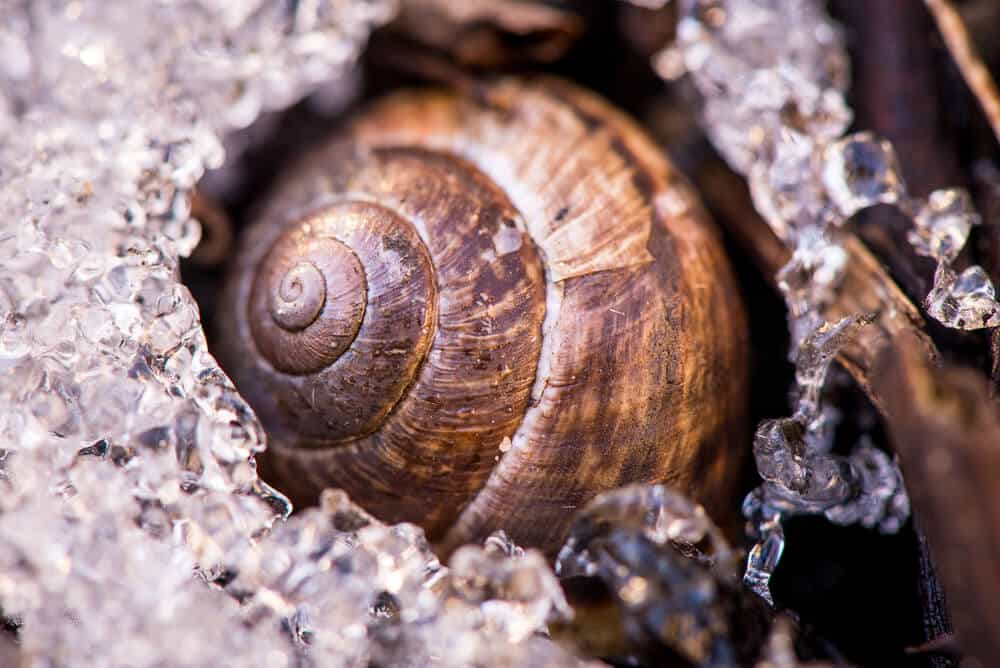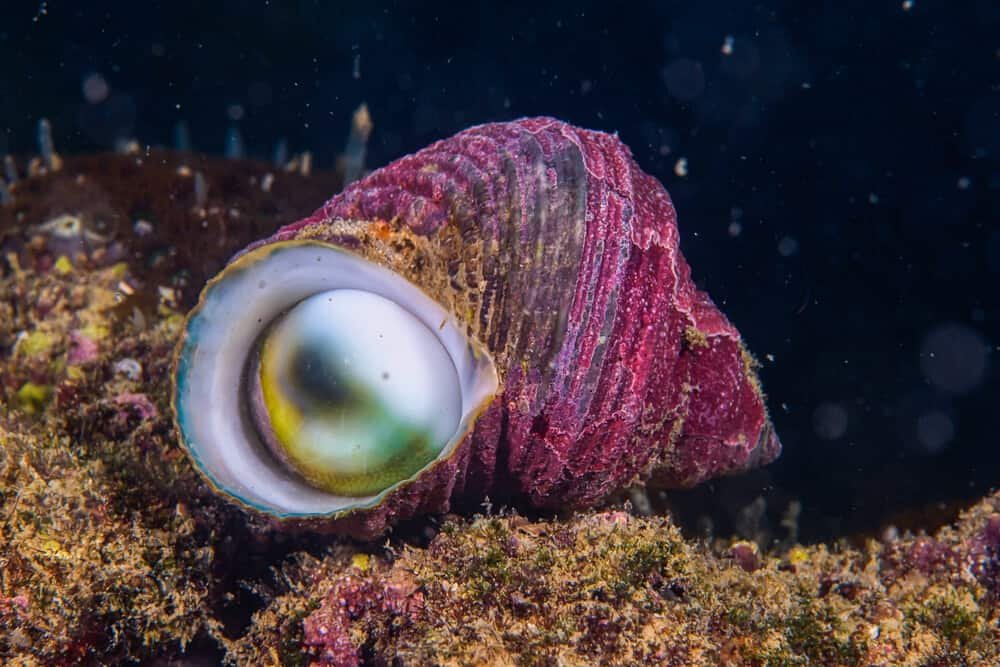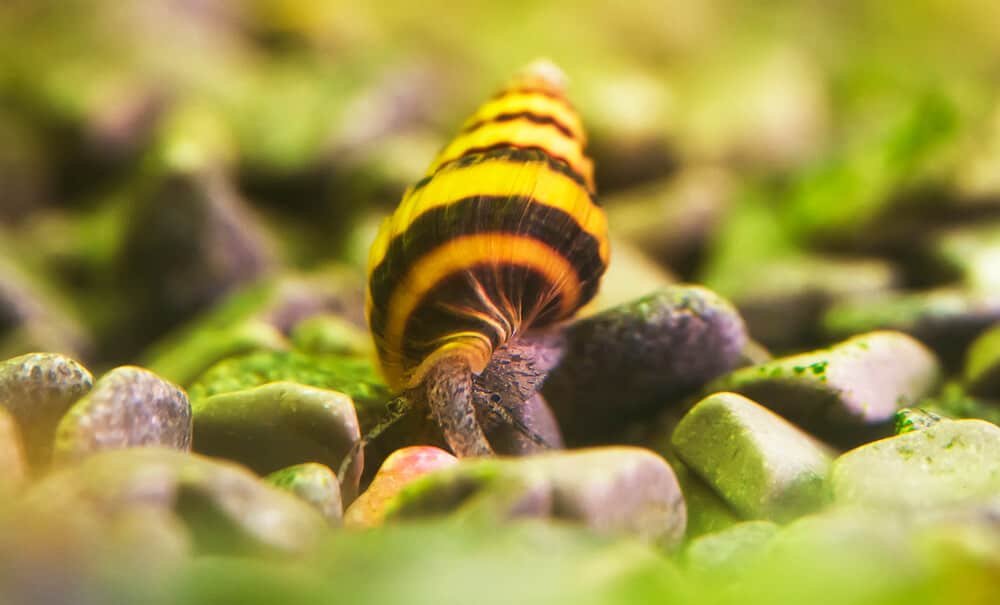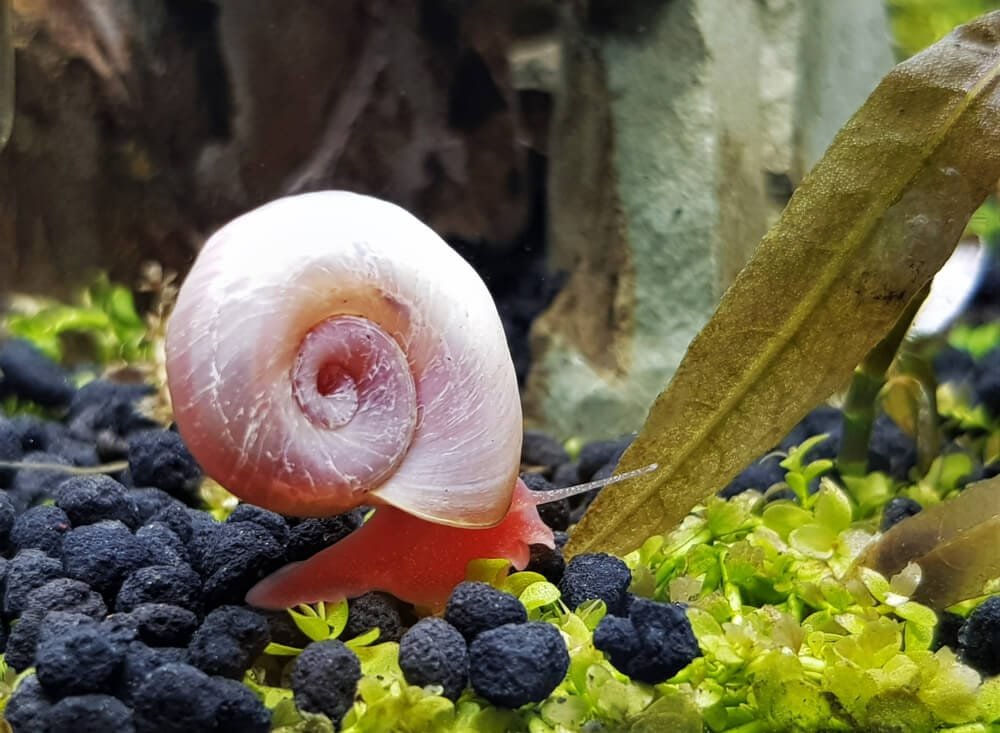During colder months, there are fewer snails out there. What could be the reason? Do snails have a way of coping with the colder month or where do they go? Snails hibernate during these months.
If you’re fascinated, read on and find out about snails’ anatomy and physiology.
Snail Anatomy and Physiology
Snails belong to the phylum Mollusca family. They are known for their slow and steady movement. They have a muscular foot and a single shell.
Their bodies are divided into 3 main parts that include the head, visceral mass, and foot.
The head carries the mouth and eyes while the visceral part contains the respiratory, reproductive, and digestive systems.
Snails use their foot for locomotion. They do this through the help of mucus that aids in movement along the ground. The shell is secreted by specialized cells in the mantle.
The respiratory system of the snail aids in breathing. Although they do not have lungs, they have specialized features known as the pallial lung.
This is a thin membrane that allows gaseous exchange. Air enters the body through a small tube called a pneumostome to the pallial lung.
The digestive system of a snail consists of the mouth, intestine, crop, esophagus, and anus. Snails feed on herbs and usually eat fruits and leaves and other plant materials.
After shredding food, it passes the esophagus into the crop where it is moistened. It then passes the gizzard which helps in grinding food.
The food then enters the intestine where it gets digested and absorbed. Waste materials are excreted through the anus.
Snail Behavior in Winter
The body temperature of snails is usually regulated by the environment and is known as ectothermic. Changes in weather conditions influence their temperature.
During winter, the snail behavior usually changes significantly and they become sluggish. During this time, their metabolism changes and results in the conservation of energy.
A drop in temperature also causes the snails to be less active. This is because they are cold-blooded, and when the temperature drops, they have less energy to move around.
A fall in temperature causes snails to hide more. Some species might burrow in the ground under debris or rocks to protect themselves from the cold.
The reduced activity helps in more conservation of energy and enhanced survival during winter.
The amount of energy stored in snails’ bodies is very minimal. As such, they need a mechanism of survival from winter until spring.
To conserve more energy, they reduce their feeding and mating activity to slow down their metabolism. They will also seal themselves in the shells to reduce water loss and prevent dehydration.
In addition, these fascinating animals also tend to minimize their exposure to the cold to upsurge their odds of survival in the cold weather.
Snail Hibernation
Hibernation is a period of inactivity showcased by snails during winter months. This period is marked by reduced activity to avoid exposure to the environment and also conserve energy.
Depending on the type of species and severity of winter, the hibernation period may last for weeks or months.
During the hibernation period, snails behave in the same ways as in cases of extreme cold weather.
Their heart rates drop, and they become unresponsive to food, predators, and external stimuli. Their bodies might also change in color or reduce.
Depending on the species, snails will also hibernate in different locations. Some will hide under rocks or leaves, while some may burrow in the ground. To conserve more energy, they can also hibernate in groups.
Snails usually undergo a process of preparation for hibernation. They will tend to feed heavily and store more energy reserves before the onset of winter. They might also prepare a place where they choose to hibernate.
Their shells will thicken and develop a protective layer of mucus. These adaptations are meant to prevent water loss from their bodies and protect them from the cold.
Factors Affecting Snail Hibernation
Several factors determine snail hibernation which includes food availability, temperature, and humidity.
In extremely cold weather, snails will look for places where temperatures remain relatively stable such as under the rocks or underground.
If the temperature fluctuates quickly or drops too low, snails can wake up from hibernation ahead of time.
When the hibernation period ends prematurely, depletion of energy reserves happens and results in decreased chances of survival for the snails.
Availability of food is also another factor that affects snails’ hibernation. If there is limited food before the onset of winter, the energy reserves will not be enough, causing limited chances of survival.
Furthermore, if the snails wake up from hibernation when the winter is not yet over and there is a limited supply of food, chances of surviving will be low.
Humidity will also affect the survival of snails during the hibernation period. Snails require specific levels of humidity to continue with body functions during hibernation.
If humidity levels are too low and the air is too dry, snails become dehydrated, get stressed, and eventually die.
In addition, when the humidity levels are too high, snails might experience fungal growth and other problems which will result in death.
As such, an optimum level of humidity is essential for the survival of snails during the hibernation period.
Final Thoughts
Snails usually hibernate in winter as a mechanism for surviving the harsh cold weather. They do this to conserve energy and avoid exposure to cold temperatures.
They apply mechanisms such as reducing physical activity and undergoing various body changes to increase chances of survival.
Hibernation is a remarkable period that brings out various adaptations of snails depending on the changes in their environment.
The next time you see a reduction in the number of snails outside, they might be in hibernation which does not mean that they are dead.
We can finally appreciate the way these fascinating creatures have evolved to deal with the challenges of the environment.







